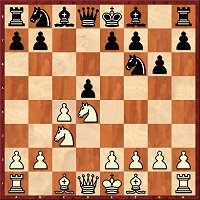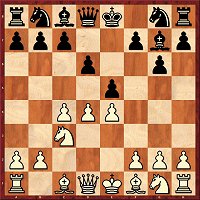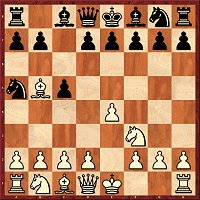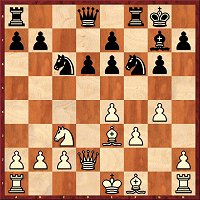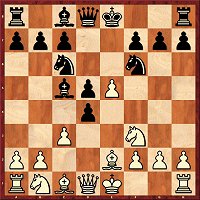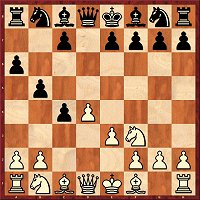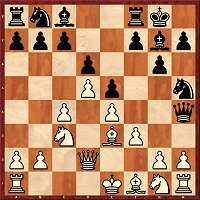
| Intro
In hisintroductory video Karsten Müller gives you some insight into the top contents in this DVD. Karjakin’s win with Black over Aronian (Norway Chess) and also Gelfand’s immensely important triumph against Nakamura are touched on, and in addition the grandmaster from Hamburg singles out the game Anand-Caruana (Tal Memorial) – commented upon once by the Italian himself and then also used by Dorian Rogozenco in his strategy column to illustrate the power of Black’s bishop pair. Müller also introduces a few of the 12 openings articles and finally shows on the board the basic position for Rainer Knaak’s opening trap, without however, giving away the solution. |
|

Boris Gelfand
Victory at his seventh attempt
| Tal Memorial It was the oldest participant, Boris Gelfand, who won the Tal Memorial in Moscow. The Israeli grandmaster was able to celebrate just one day before his 45th birthday one of his greatest tournament successes. And he did so in an unbelievably strong tournament with Carlsen, Anand, Kramnik, Caruana, Nakamura etc. Gelfand remained undefeated and was able to win three games. All in all the Tal Memorial provided us with a whole series of unusual moments and results, including a plethora of wins for Black and unbelievably bad results for world champion Anand and ex world champion Kramnik in the last two places. |

Gelfandannotates
Nakamura,H - Gelfand,B 0-1
| On the DVD Boris Gelfand analyses the tournament deciding game against Hikaru Nakamura. Against the US player who had till then been in the lead, Gelfand finally brought out the Sicilian Sveshnikov Variation – after all, it had mostly been denied him by those with White adopting 3.Bb5. Nakamura chose 11.c4, a very rare idea with which to combat Black’s setup, but Gelfand was able to demonstrate that Black has nothing to fear here either and that he gets active play. What is especially worth seeing is the mating attack which Gelfand, in spite of the reduced material, whipped up in the position on the board with 35...e3. After 36.fxe3 Bxe3+ 37.Kg2 Bd5+ 38.Kh3 Rxb5 39.Bxb5 Ne5 40.Nc3 the Israeli tightened the mating net with 40...Bf3. |

Fabiano Caruana
Curious series of games at the start
| In the case of Fabiano Caruana the Tal Memorial got off above all to a curious start, namely a see-saw of wins with Black and losses with White. At the end the Italian had +1 which saw him share third place. On the DVD the new number three in the world ranking list annotates his victory with Black over Anand from the first round of the tournament. |

Anand,V - Caruana,F 0-1
Position before 25.Ndf1
| In a Ruy Lopez Fabiano Caruana was obliged after 16...Ncb4 to play an early pawn sacrifice, but one which secured for him full equality on account of his active play on the kingside. The game took its decisive turn when, in the position in the diagram on the left, Anand decided to give up his extra pawn with 25.Ndf1. As Caruana explains in his analysis, after 25.Qxc7 Qd5 26.Nhf3 Na8 27.Qc2 Rc8 28.Qd1 White would have been over the worst of things. But the way things were Caruana obtained a clear advantage thanks to his advantage in space on the kingside and his bishop pair. At the appropriate moment Caruana liquidated into a winning endgame with bishops of opposite colours and ended this remarkable game with a mating attack. |
|

Lenier Dominguez
Last minute victor
| Thessaloniki FIDE GP After Topalov’s procession through the previous Grand Prix in Zug it looked as though the overall rankings were becoming a boring affair. But it was quite different players who set the tone in Thessaloniki (Topalov lagging behind this time in 8th place). The trio Kamsky, Dominguez and Caruana made the running here and it was not until the final round that things were decided. Caruana defeated Kamsky and thus pushed the American off the winner’s pedestal. At the same time Lenier Dominguez was victorious over Topalov and with his win secured sole victory in the tournament for himself. |

Kamsky annotates
| The new US champion Gata Kamsky had a great tournament in Thessaloniki (including convincing wins over Nakamura and Morozevich). This DVD is the first on which he has annotated one of his games for ChessBase Magazine. In the very first round Kamsky came up against the future tournament winner. For that reason it would be a “very important game” for the American, since in his case it is always the first-round game which “sets the tone for the whole tournament”. |
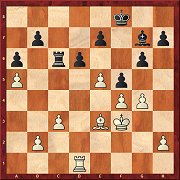
Kamsky,G - Dominguez Perez,L 1-0
Position after 33...f7-f5
| On account of his recent bad experiences against the Cuban in unorthodox positions, Kamsky aimed on this occasion for a quiet and solid position. Perhaps it was too quiet, because Dominguez equalised as Black without any great difficulty. So it was only after a mistake by his opponent thatKamsky got on the route to victory. In the position on the board Dominguez had just played 32...f5. Things continued 33.gxf5 and now 33...gxf5 would simply have lost a pawn on account of 34.e6 Bf6 35.Rd5 Kg7 36.Rxf5. But after the text moves too (33...dxe5 34.fxg6 hxg6 35.Rd7) White got a clear advantage for the first time. |
|

Sergey Karjakin
Start with 4 out of 4
| Norway Chess It would not have taken much for Magnus Carlsen to have caught up with Sergey Karjakin at the finish. In the elite tournament in Stavanger in Norway the Russian had rushed into the lead by winning his first four games, but he weakened in the second half of the tournament. And thus Carlsen was able to catch up, not least due to his victory over Karjakin himself. But even the number one in the world ranking list showed his nerves in the penultimate round when he ruined his chances of victory in a defeat at the hands of Wang Hao. |
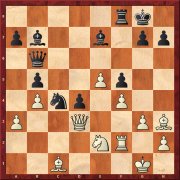
Aronian,L - Karjakin,S 0-1
Position before 29...Rd8
| Sergey Karjakin scored one of his nicest wins in round 4 with Black against Aronian. His second Alexander Motylev annotates this brilliancy on the DVD. Whenever you play through the game, you have the impression that after 25...Nc4 things were self-evident. But of course that is not the case. In the position on the board on the left Karjakin played 29...Rd8. According to the motto: why should I worry about my f-pawn – my d-pawn will decide matters. And that is indeed what happened. Aronian’s attack on the opposing king soon petered out and shortly thereafter he was forced to resign. |

Anand,V - Nakamura,H 0-1
Position before 24...b4
| Hikaru Nakamura also managed four wins in Norway. Had it not been for his defeat at the hands of Karjakin he would have taken the top spot. The American played a brilliant game with Black against Anand. It involved an unconventional Ruy Lopez: Nakamura submitted to isolated doubled pawns on the e-file and this game him strong long-term pressure against White’s weak point on f2. In one of the critical positions Black played 24...b4 (diagram). The advance was too ambitious, as GM Szabo points out in his analysis. Because at this moment the world champion could have gained the advantage with the intermediate move 25.Rd2. But Nakamura was in luck. Anand continued with 25.cxb4 and came under a fatal attack as a result of a blunder on move 29. |
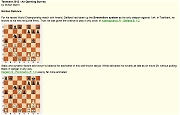
Openings report
Norway Chess 2013
| Many of the games from the tournament are analysed in detail on the DVD. Grandmaster Mihail Marin has looked over the games and presents to you in his openings report the latest trends and the new ideas. In addition to Marin, Grandmasters Ftacnik, Krasenkow, Mikhalchishin, Szabo and Sumets have contributed analyses. |
|

Alexander Moiseenko
Victory on tie-break
| European Championship Legnica 2013 The European Championship in Legnica in Poland ended in a photo finish. From round 4 on Alexander Moiseenko had taken the lead on his own and brilliantly defended it right up till the final round. But then he was defeated by Nepomniachtchi and that allowed nine players to catch up with him on the same number of points. But for the Ukrainian fortune favoured the brave: the tie-break system turned the 2010 Olympiad winner into the 2013 European champion too! |
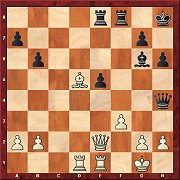
Almasi,Z - Moiseenko,A ½-½
Position before 24.Be4
| Moiseenko was undefeated until the final round, but he was losing several times against Zoltan Almasi. The Hungarian has analysed in detail this fifth-round game and in his comments wrestles with the chances he missed. From the very start the game was going well for Almasi: in the opening he sprung his surprise with the white pieces (3.Bb5 against the Sicilian), and he obtained a solid plus thanks to Black’s isolated pawn on e5. With 24.Be4 (diagram) he gave Moiseenko the choice between two bad options: allowing the white bishop to have the central e4-square or cementing his weakness on e5 by exchanging the bishops. Almasi went on to extend his advantage in consistent fashion, but after the time control he first of all overlooked a winning mating attack and at the finish allowed his opponent to escape with a draw in the rook ending. |

















